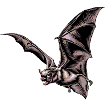Museum, University of Nebraska State

University of Nebraska State Museum: Mammalogy Papers
Document Type
Article
Date of this Version
12-24-1980
Citation
Annals of the Carnegie Museum (December 24, 1980) 22 (article 22): 379-403.
Abstract
Chromosomal and morphometric studies were conducted on a sample from an assemblage of Akodon spp. occurring in various patterns of sympatry from the provinces of Catamarca, Jujuy, Salta, and Tucumán, Argentina. Results showed three distinct morphometric groups based upon size. Size also varied with age, but there were no significant differences in measurements of males and females. The three morphometric groups have distinct karyotypes. Akodon caenosus Thomas is the smallest of the three, and has a karyotype of 2n = 34, FN = 40. A. boliviensis tucumanensis J. A. Allen is intermediate in size and has 2n = 40, FN = 40,41. Three variations in centromeric position of the X chromosomes and two autosome arm numbers were found. A. varius simulator Thomas is the largest in size, has a distinctive white chin-spot, and has 2n = 41,42 and FN = 42. Variation in diploid number is apparently due to centric fission or fusion.
Included in
Biodiversity Commons, Developmental Biology Commons, Terrestrial and Aquatic Ecology Commons, Zoology Commons


Comments
Copyright 1980, Carnegie Museum of Natural History. Used by permission.